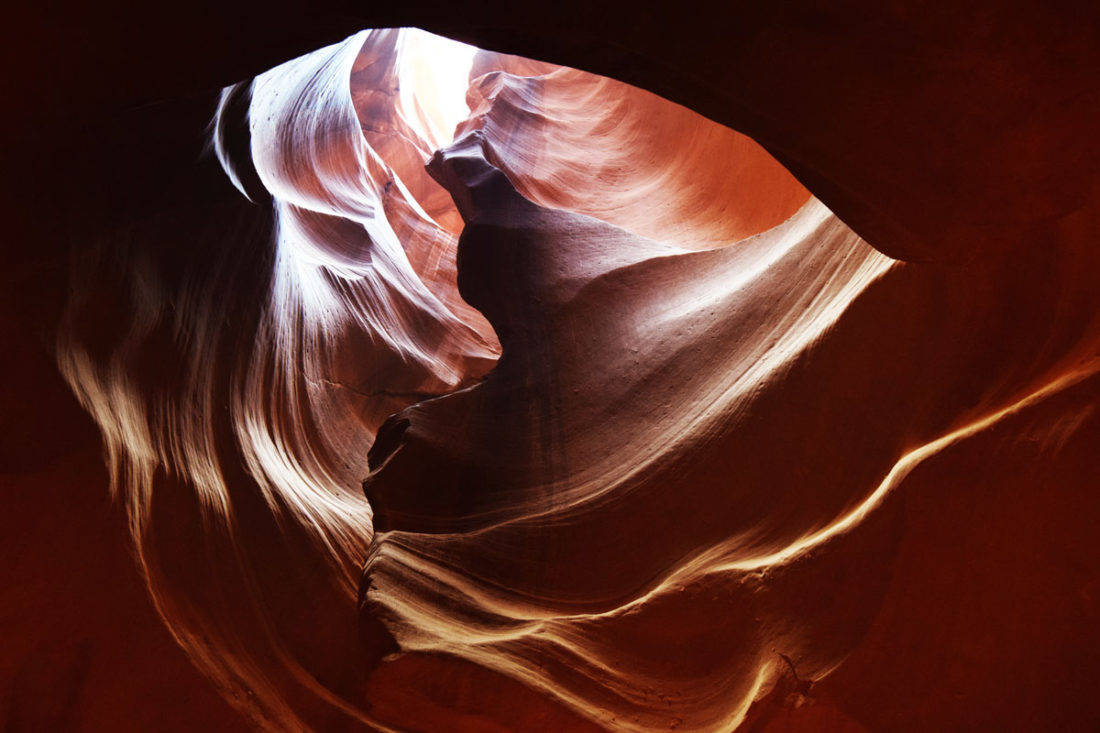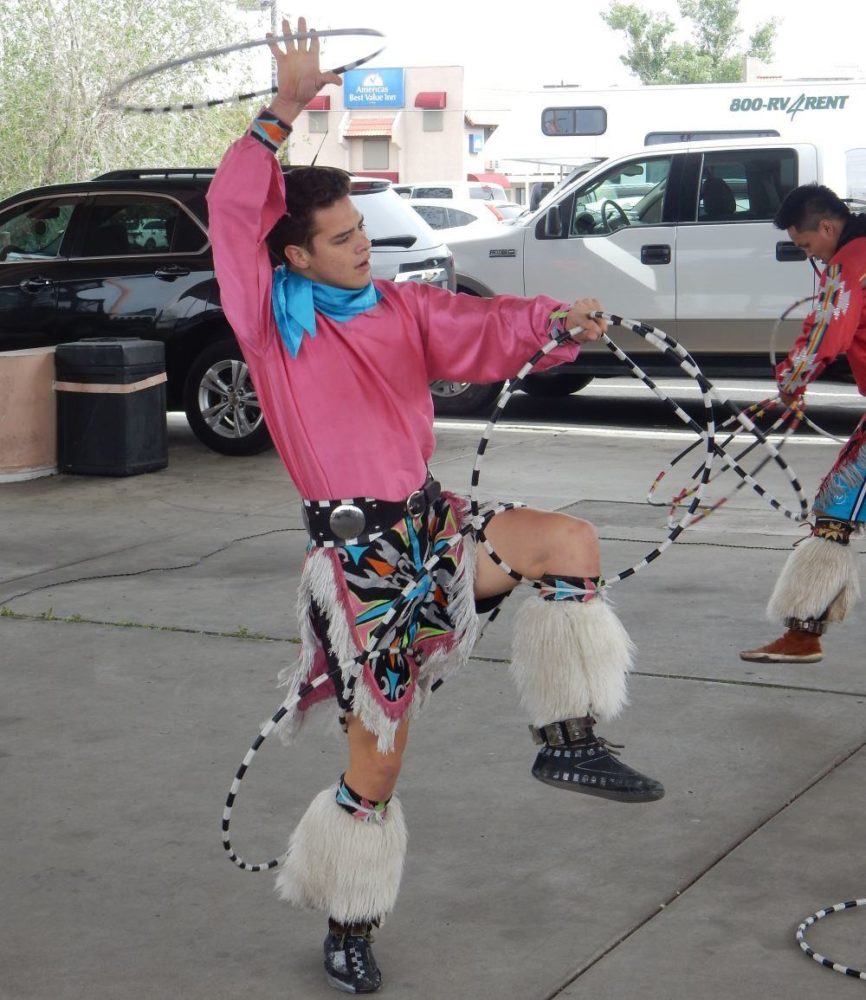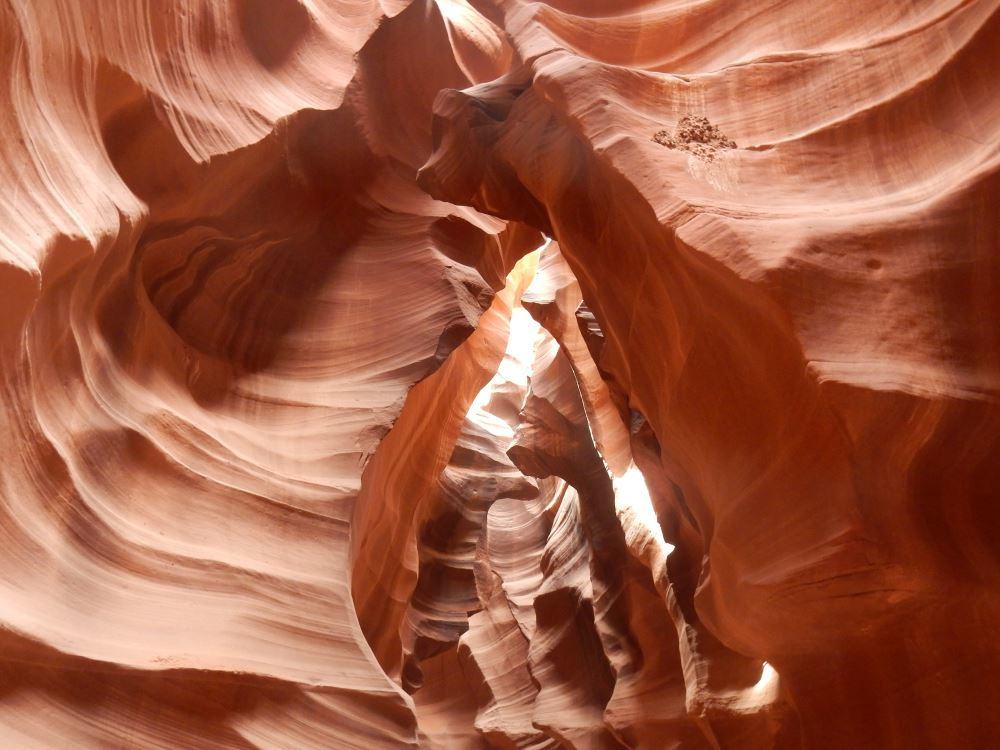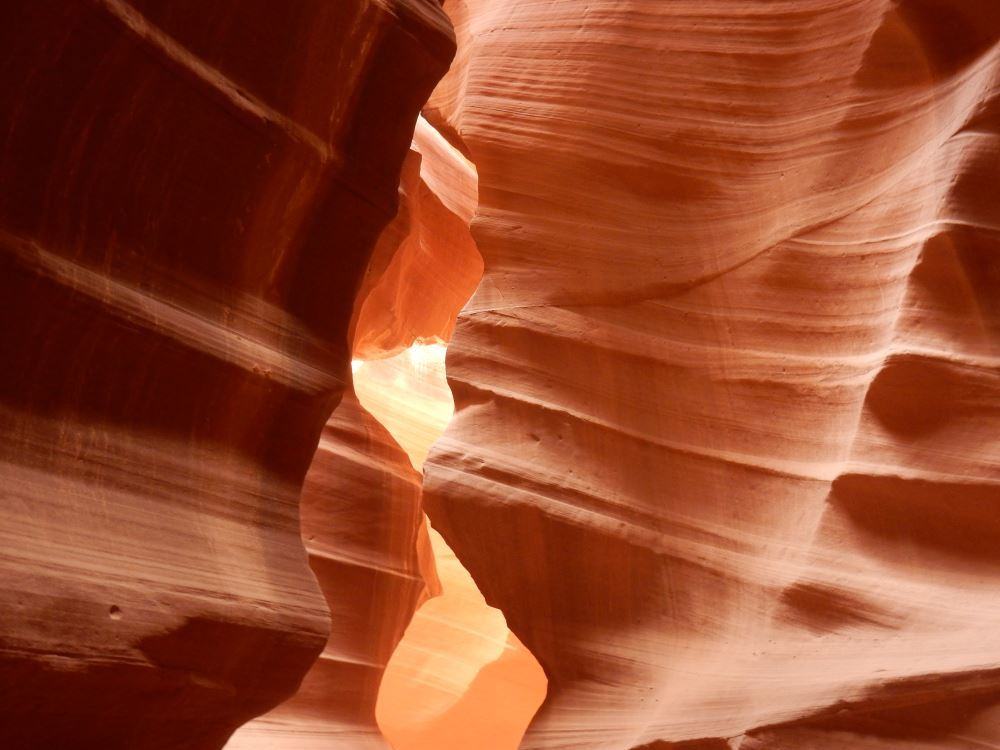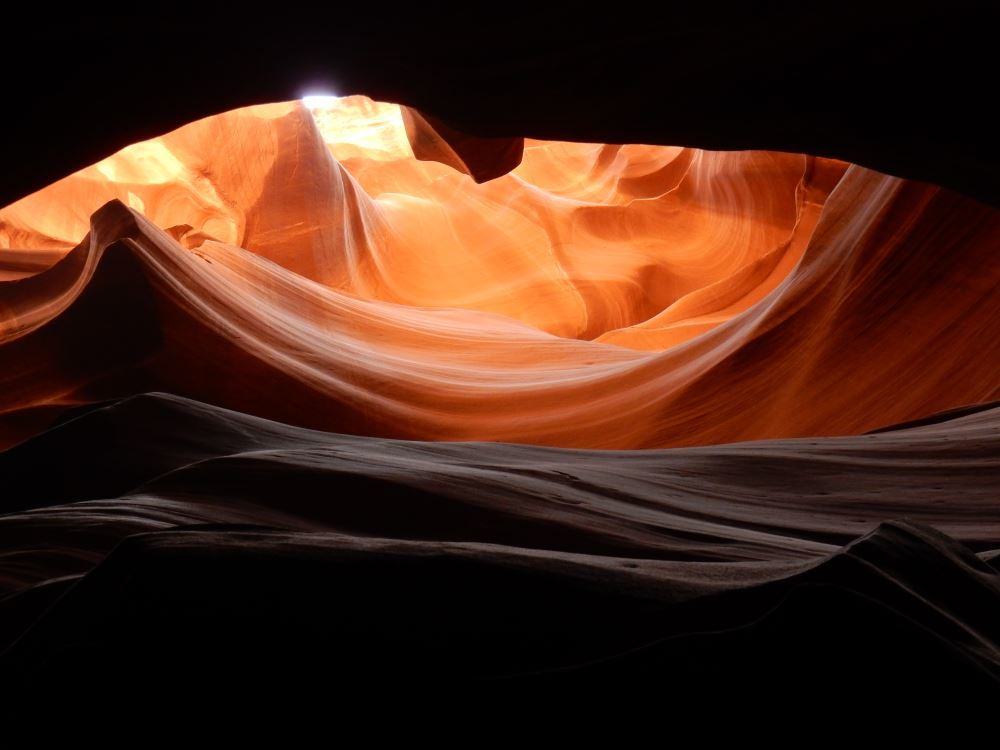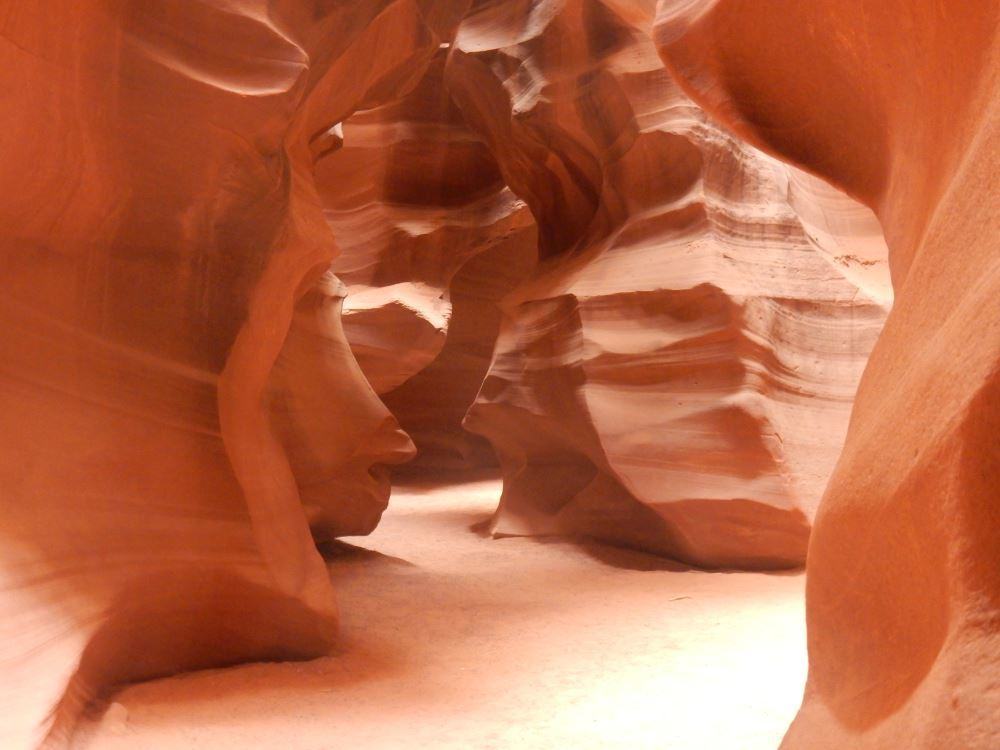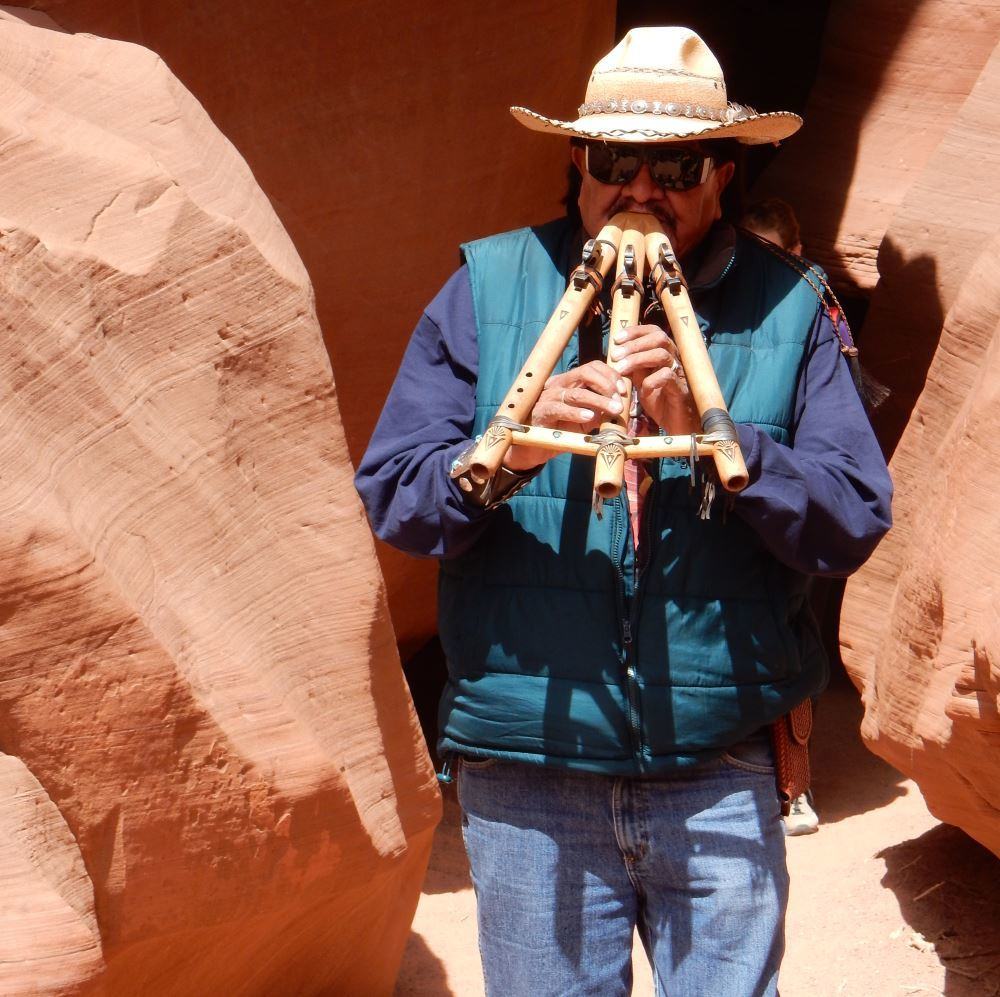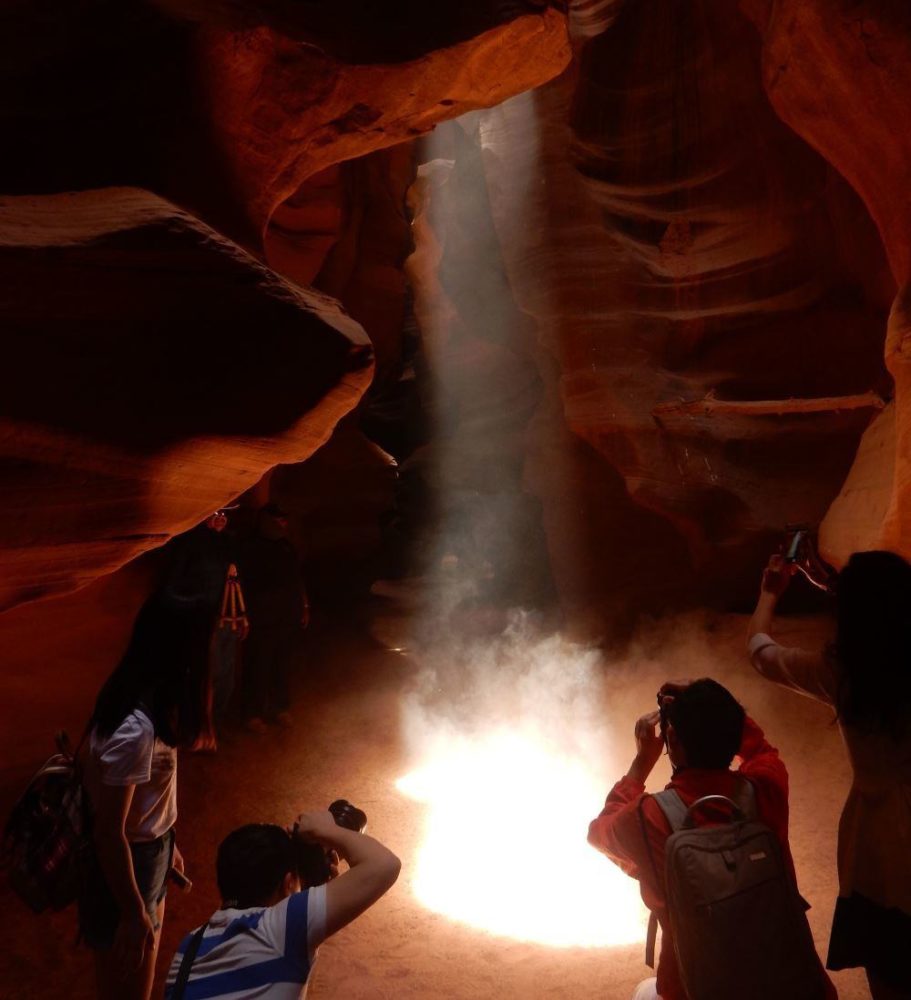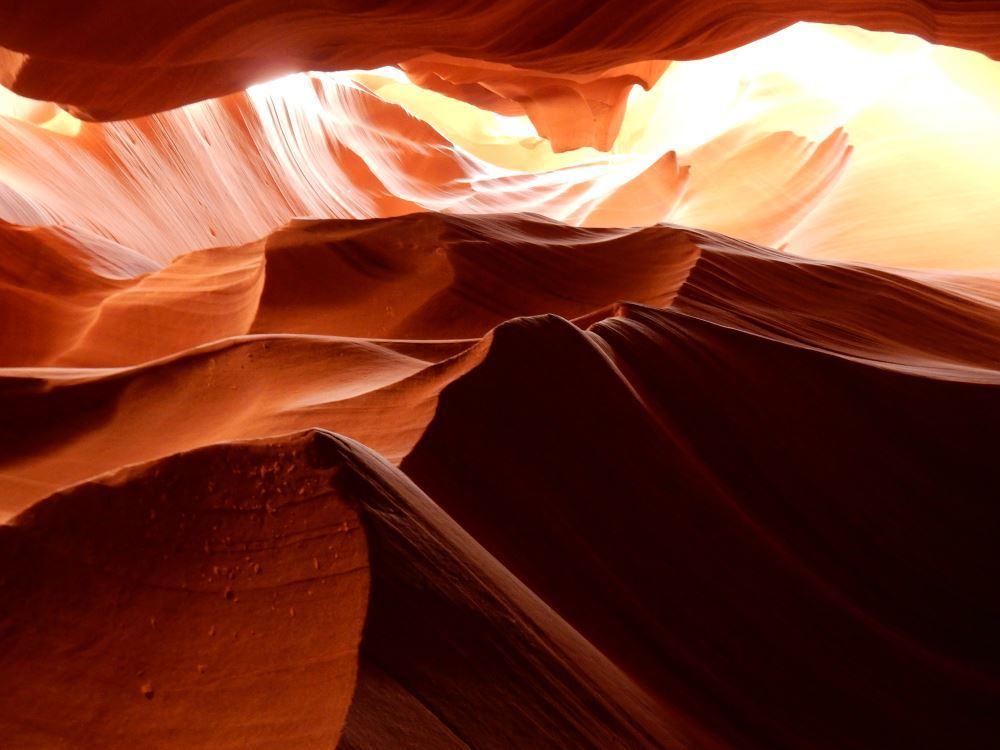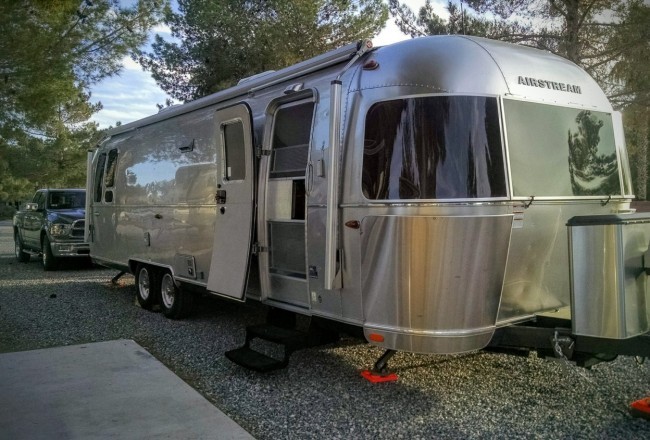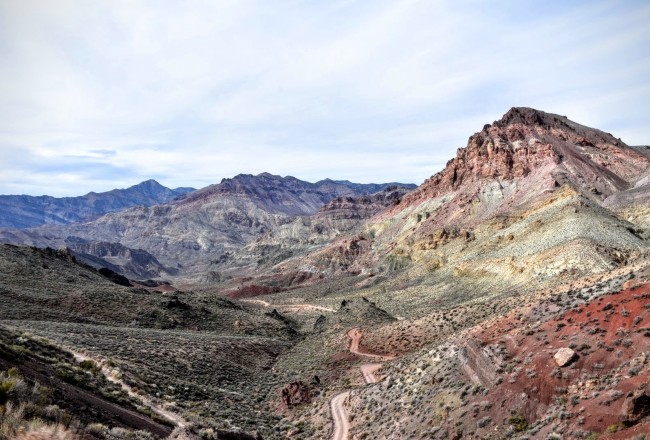Antelope Canyon lies in the great Navajo Nation wherein meanders down from the hills into lake Powell. Antelope Canyon has a few different bits and pieces and the bit we explored is referred to as Upper Antelope Canyon. The canyon got its name, according to our native guide, because back before the Glen Canyon Dam the Antelope used to use it for shade in the summer allowing the natives to make easy prey of them.
We booked a tour with Antelope Slot Canyon Tours. I had some initial concerns as they run their operation out of an old gas station in Powell that frankly looks run down with not much love put into it. I set my expectations appropriately and proceeded in good faith. Prior to the trip, we provided entertainment in the form of two young men performing a native hoop dance. Neither Trail nor I had seen one performed or knew anything about it. The dancers use wooden hoops while dancing to create figures of animals and objects, always in motion and using more and more hoops as the dance progresses. I was both impressed and entertained. The two young men were both skilled and charismatic in their performance. Apparently they finished in the top 20 at the annual national competition in Phoenix.
After this we boarded a brightly painted truck, sitting in the truck bed on benches with a plastic tarp overhead and to each side where there were semi-transparent window sections. Again my expectations were deflated a bit. It was windy, noisy, cramped and hard to see. If I was supposed to admire the scenery from here it was not going to be much fun. Entering the reservation we struck out through an unpaved sandy wash with fine dust coating everyone and everything.
I was relieved when we arrived at our destination and exited the truck. Happily nothing we were here to see was to be seen while in the truck. Before us was a sandstone cliff face with a great fissure running from top to bottom. This clearly was where we were headed and on foot. Our colorful native guide Leonard Nez gathered us up and got us underway into what would turn out to be a natural hall of wonders.
The canyon is carved out of sandstone by floodwaters that rush through during flash floods, grinding away at the walls and washing tons of sand in and out of the canyon. The result is better seen than described but I’ll give it a go. The walls of the cavern are a bit like if you took the waves of the turbulent ocean, froze them in time, sanded off the foam, turned it on its side such that two oceans faced side by side one another. The stone ripples and turns both with rounded curves and angular points, all in a kind of suspended fluid motion. It is both seemingly random, and clearly of a system driven by the relentless certainty of physics and nature.
What you can see with your eyes is impressive and fulfilling, but when you use the eye of the camera to view the cavern it blazes to life like a world aglow with an inner fire. Cameras love this place for some reason. Due to the relative darkness, the aperture stays open longer and the light is amplified in magical ways creating the kinds of pictures you see here. Just point, hold the camera still and take the picture. Nearly anywhere you point the thing you get some jaw dropping images.
Not shockingly pretty much everyone on the tour has their camera out snapping away. While we were on the regular tour, others there were on photo tours and had tripods set up to capture the wondrous images. All in all, it’s a narrow canyon and things get pretty crowded. The guides do an admirable job keeping it all moving along but it does make you yearn for a chance to get the place all to yourself, to bask in its awesome in some kind of solitude, it almost cries out for it.
Let’s get back to our guide for a moment. Leonard clearly loves his work. His energy is infectious and if you looked up colorful native guide in a Hollywood casting book you could well see his picture grinning back at you. He’s taken the time to learn the names of the cave formations and phrases like “let’s go” in Japanese, German, and Mandarin, relishing the opportunities to use them. Knowing all the best picture spots he’s more than happy to take your camera, get the settings right for the canyon, and snap some quick shots for you of the more famous sections of the place. He also plays a mean triple flute and has a pretty wicked sense of humor. All in all a perfect guide.
Before too long we’d reached the end of the slot canyon and had to head back, this time trying to move quickly and stay out of other folks shots who are working their way in. We were treated to a sunbeam in one of the rooms on the way back, a perfect beam of sunlight at just the right time of day shining down through the dust. Folks swarmed around it like moths to a flame and our guide kicked up more dust to help it stand out for us. Dust is pretty much a constant in the canyon, gently filtering down from above as the wind blows sand over the lip of the place. We were very glad to have worn our wide brim hats but the cameras needed a good cleaning afterward.
Another dusty and bumpy ride back in the truck and our trip came to an end. All in all, the great guide, amazing pictures, and the sheer beauty of the place made it worth every penny and any inconvenience. We were told that lower Antelope was equally amazing, though a bit different in shape. Perhaps next time we are in the area we will find out how it compares.
